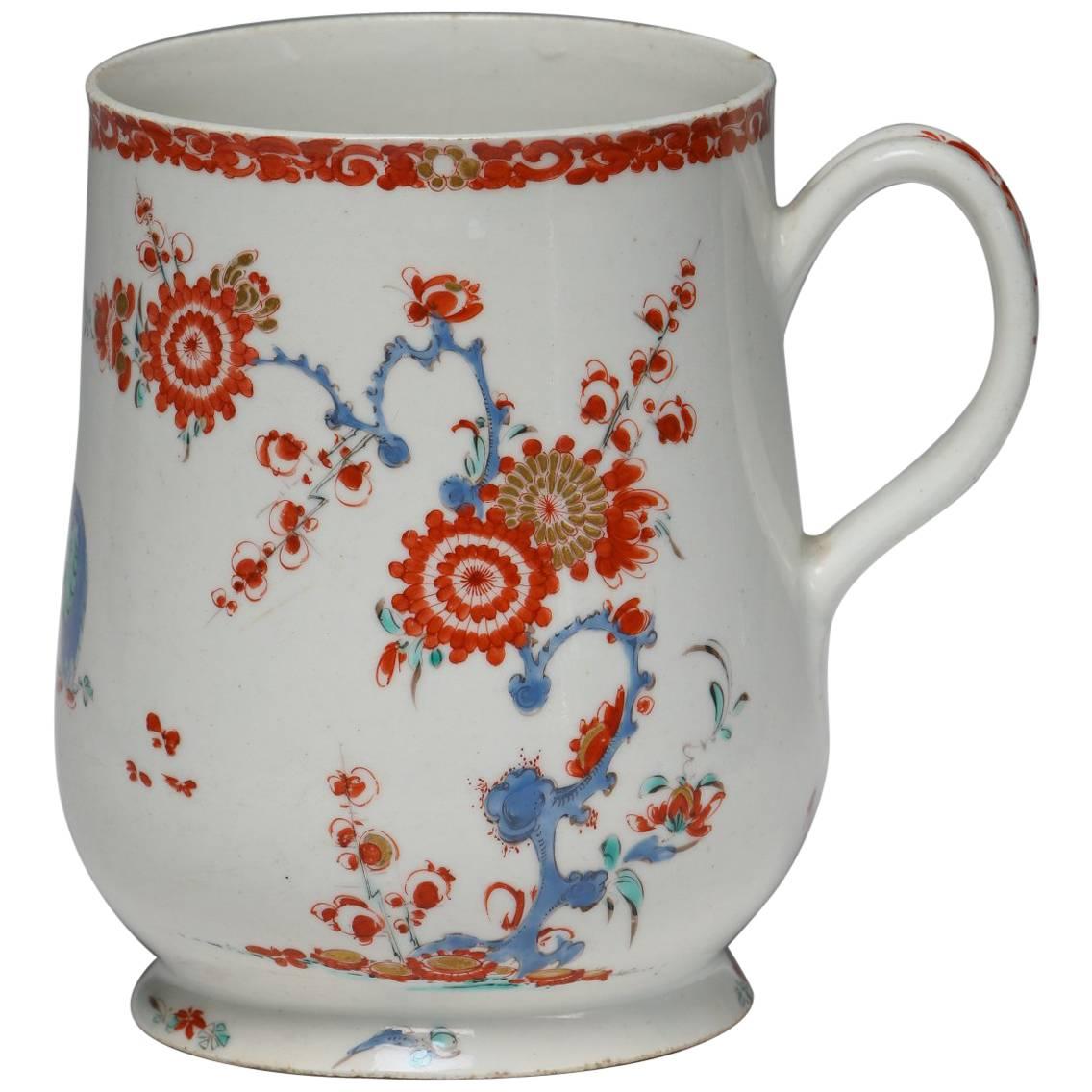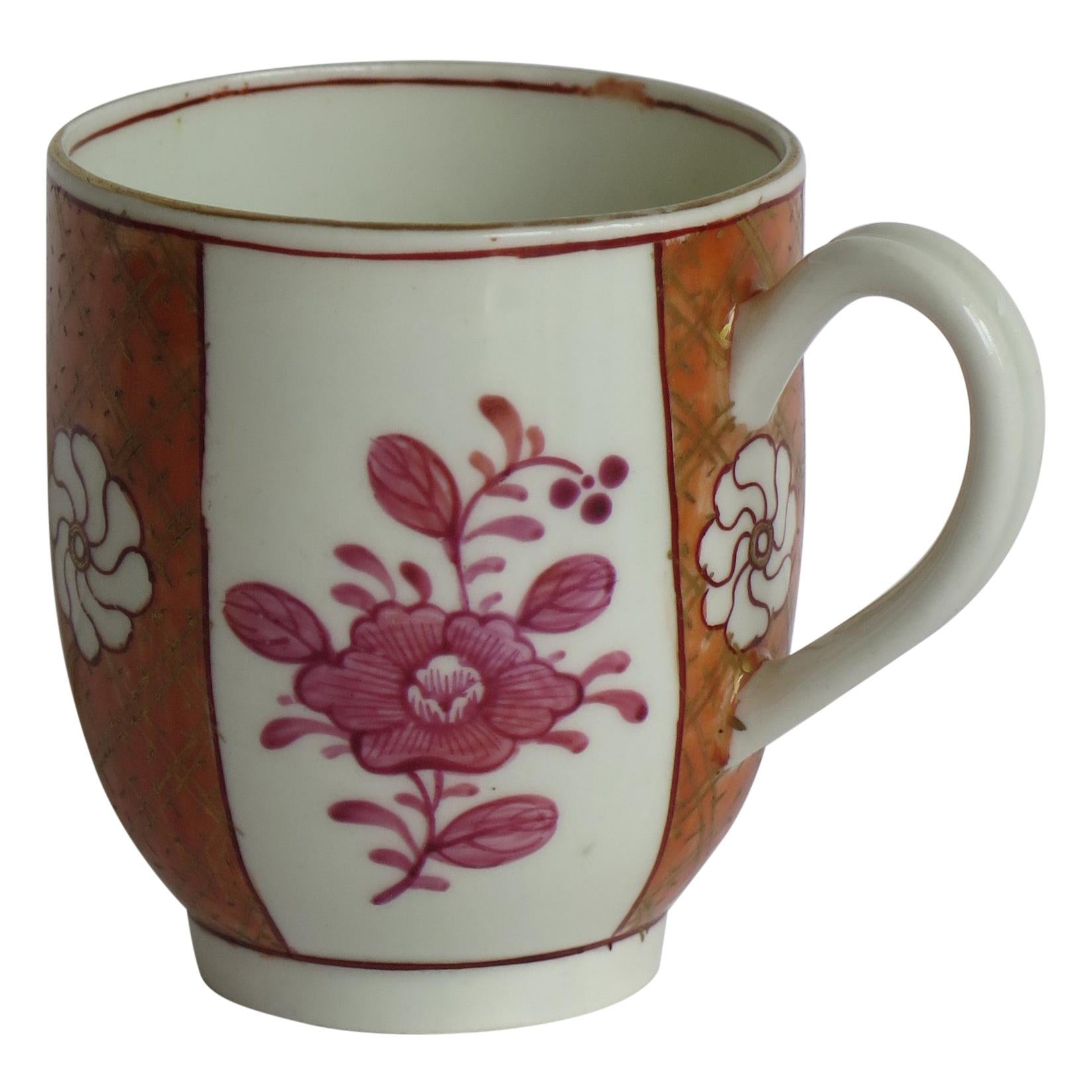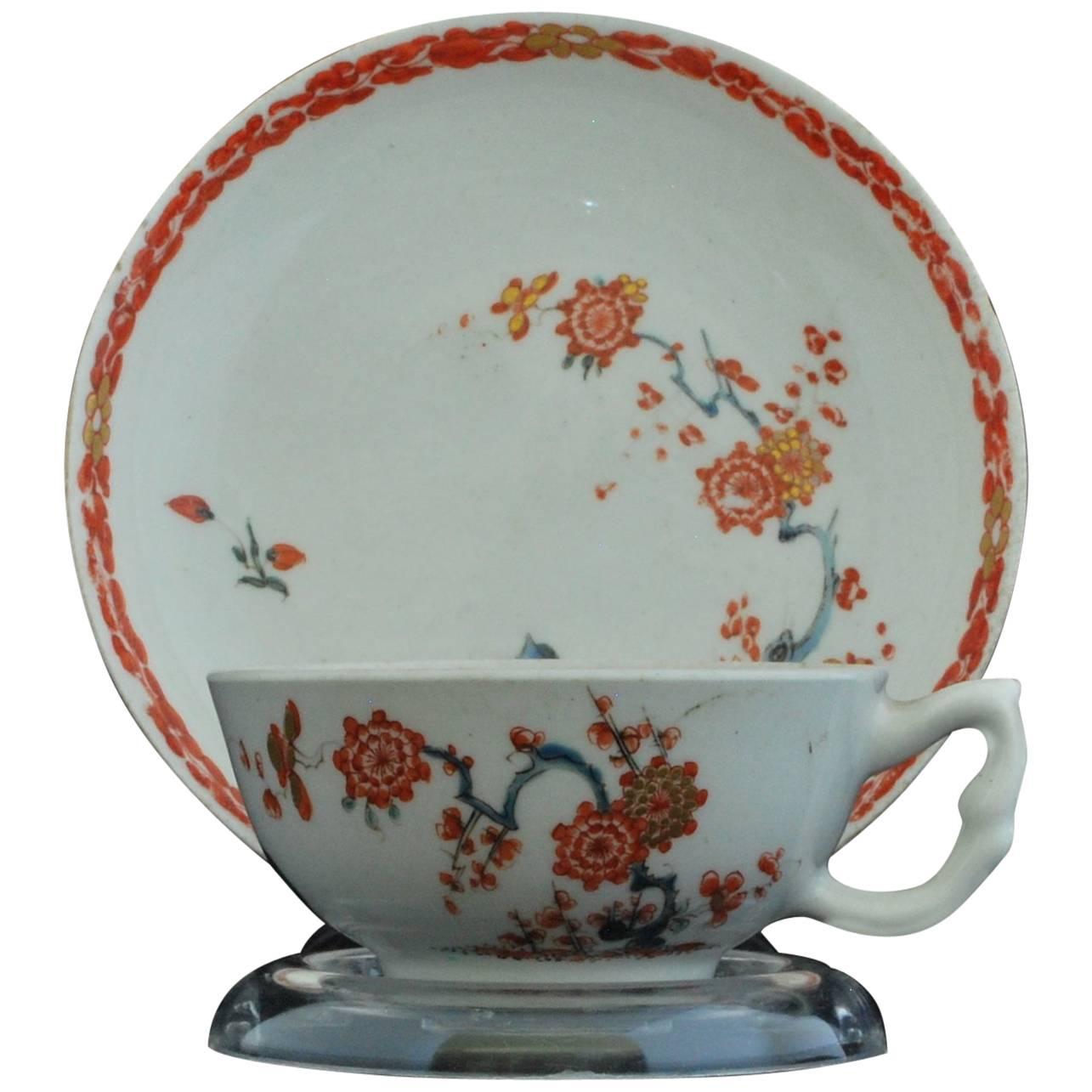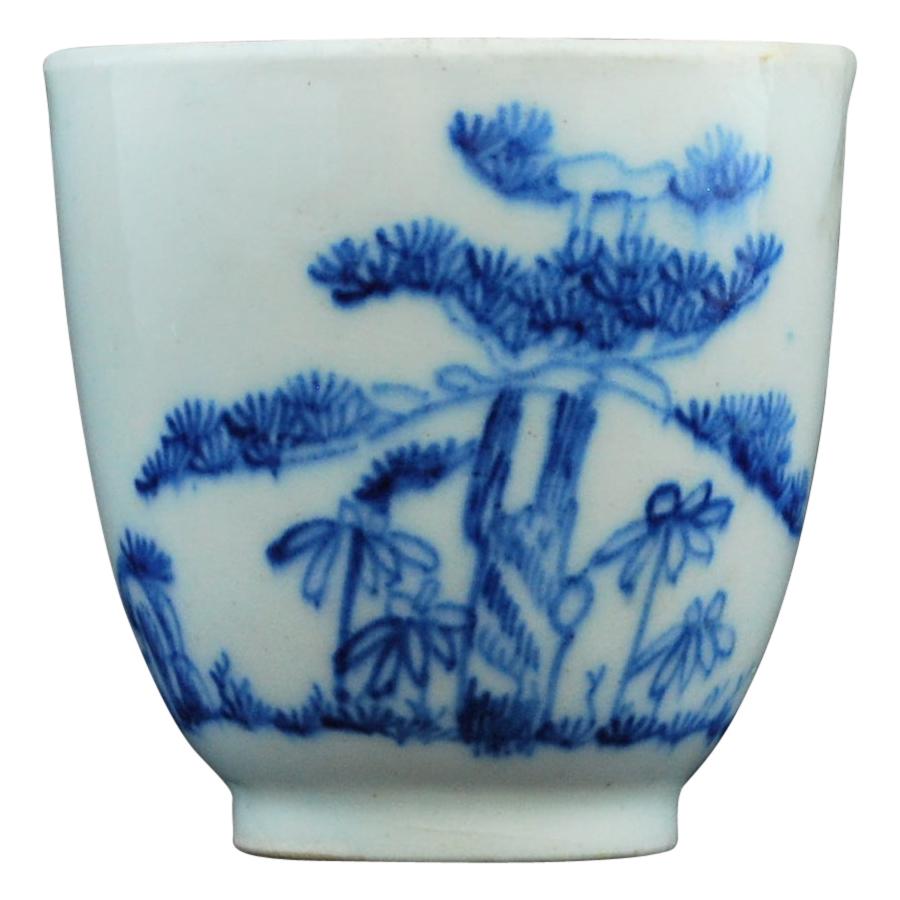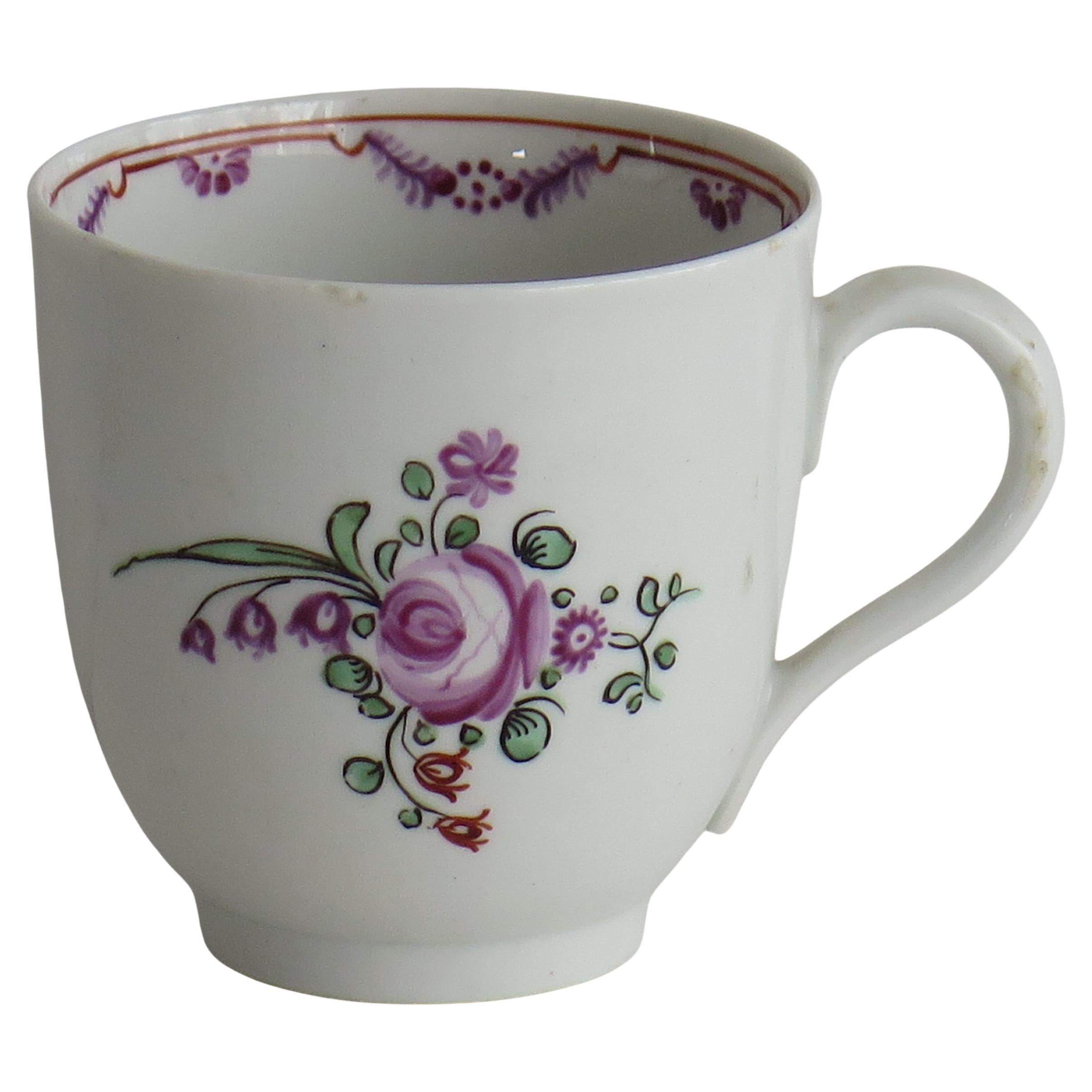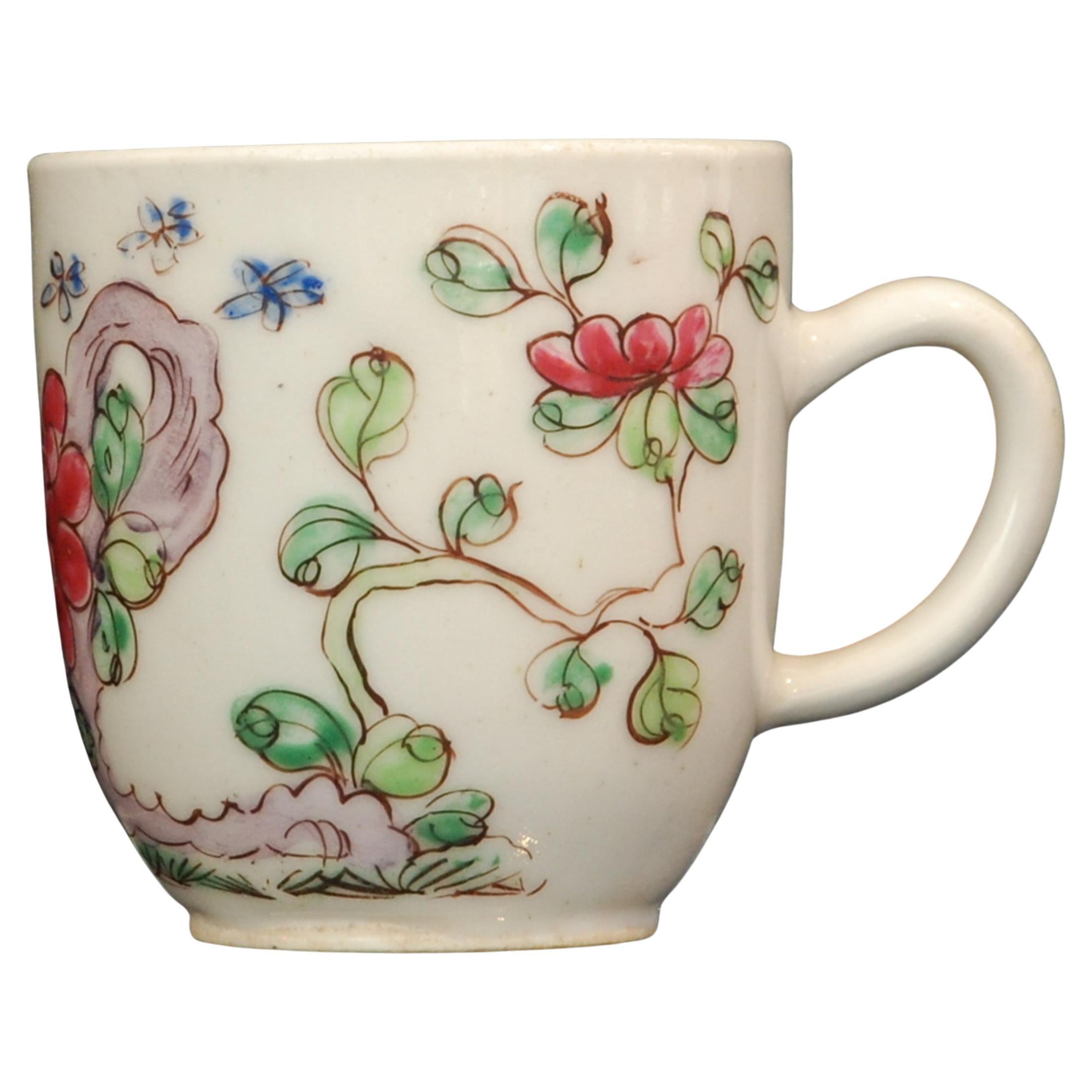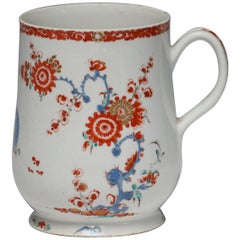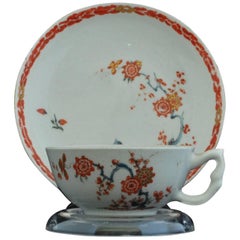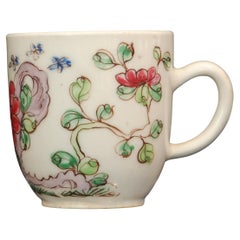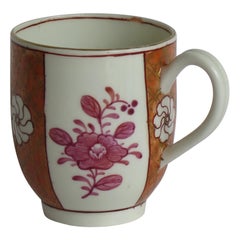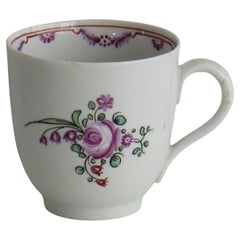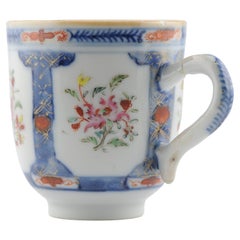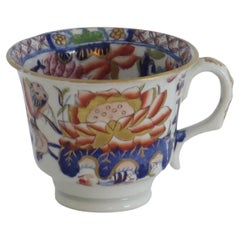Items Similar to Coffee Cup, Kakiemon Decoration, Plymouth, circa 1769
Want more images or videos?
Request additional images or videos from the seller
1 of 6
Coffee Cup, Kakiemon Decoration, Plymouth, circa 1769
$1,360
$1,70020% Off
£1,032.49
£1,290.6120% Off
€1,180.95
€1,476.1820% Off
CA$1,900.12
CA$2,375.1520% Off
A$2,113.35
A$2,641.6820% Off
CHF 1,103.52
CHF 1,379.4020% Off
MX$25,717.16
MX$32,146.4520% Off
NOK 14,093.67
NOK 17,617.0920% Off
SEK 13,217.38
SEK 16,521.7320% Off
DKK 8,813.86
DKK 11,017.3220% Off
Shipping
Retrieving quote...The 1stDibs Promise:
Authenticity Guarantee,
Money-Back Guarantee,
24-Hour Cancellation
About the Item
Coffee cup in hard-paste porcelain, decorated with Kakiemon painting. The fruits of the Plymouth factory are perhaps the first examples of hard-paste porcelain made in England.
- Creator:Plymouth Porcelain Factory 1 (Maker)
- Dimensions:Height: 3 in (7.62 cm)Diameter: 7 in (17.78 cm)
- Style:Japonisme (Of the Period)
- Materials and Techniques:
- Place of Origin:
- Period:
- Date of Manufacture:circa 1769
- Condition:A very small hairline to rim has been invisibly restored.
- Seller Location:Melbourne, AU
- Reference Number:Seller: 47241stDibs: LU315139225841
About the Seller
5.0
Vetted Professional Seller
Every seller passes strict standards for authenticity and reliability
Established in 2005
1stDibs seller since 2017
79 sales on 1stDibs
Typical response time: <1 hour
- ShippingRetrieving quote...Shipping from: Melbourne, Australia
- Return Policy
Authenticity Guarantee
In the unlikely event there’s an issue with an item’s authenticity, contact us within 1 year for a full refund. DetailsMoney-Back Guarantee
If your item is not as described, is damaged in transit, or does not arrive, contact us within 7 days for a full refund. Details24-Hour Cancellation
You have a 24-hour grace period in which to reconsider your purchase, with no questions asked.Vetted Professional Sellers
Our world-class sellers must adhere to strict standards for service and quality, maintaining the integrity of our listings.Price-Match Guarantee
If you find that a seller listed the same item for a lower price elsewhere, we’ll match it.Trusted Global Delivery
Our best-in-class carrier network provides specialized shipping options worldwide, including custom delivery.More From This Seller
View AllBaluster Mug, Kakiemon Decoration, Bow Porcelain Factory, circa 1753
By Bow Porcelain
Located in Melbourne, Victoria
Pint mug of baluster form with flared base and grooved strap-handle with heart-shaped termination. The face of the mug painted after the Kakiemon with the two Quail pattern. The reve...
Category
Antique Mid-18th Century English Japonisme Porcelain
Materials
Porcelain
$2,380 Sale Price
30% Off
Cup and Saucer, Kakiemon Decoration, Bow Porcelain Factory, circa 1753
By Bow Porcelain
Located in Melbourne, Victoria
Low tea cup with clip handle with matching saucer, decorated after the Kakiemon with the two quail pattern. An unusual form with scarce decoration.
Prov...
Category
Antique Mid-18th Century English Japonisme Porcelain
Materials
Porcelain
$2,030 Sale Price
30% Off
Coffee Cup, Bow Porcelain Factory, circa 1749
By Bow Porcelain
Located in Melbourne, Victoria
Of Chinese export form with loop handle; the body imaginatively painted in a bright ‘early blue’ underglaze with pine, rock and bamboo after the Chinese. Yellow tinged body; clear gl...
Category
Antique Mid-18th Century English Rococo Porcelain
Materials
Porcelain
Coffee Cup with Famille Rose decoration, Bow Porcelain, circa 1750
By Bow Porcelain
Located in Melbourne, Victoria
A direct copy of a Chinese shape, decorated with chinoiserie painting of typical motifs in the famille rose palette.
Category
Antique Mid-18th Century English Chinoiserie Porcelain
Materials
Porcelain
Tea Bowl and Saucer, Kakiemon Decoration Chelsea, circa 1752
By Chelsea Porcelain
Located in Melbourne, Victoria
A large octagonal tea-bowl, decorated in the Japanese style.
“The decoration is effective and pleasing, but does not seem to have been very frequently employed” – McKenna.
Pro...
Category
Antique 1750s English Anglo-Japanese Porcelain
Materials
Porcelain
$6,000 Sale Price / set
20% Off
Coffee Cup and Saucer Nantgarw Porcelain, circa 1815
By Moses Webster, Nantgarw Pottery
Located in Melbourne, Victoria
A rare coffee cup and saucer in Nantgarw’s superb soft-paste porcelain. Each piece is gilded and decorated in one of the London workshops with ...
Category
Antique 1810s Welsh Regency Porcelain
Materials
Porcelain
You May Also Like
First Period Worcester Coffee Cup Porcelain Finely Hand Painted, circa 1770
By 1st Period Worcester Dr. Wall
Located in Lincoln, Lincolnshire
This is a rare first period (or Dr. Wall) Worcester Coffee Cup, with a distinctive hand painted pattern, made of porcelain and dating to the 18th century, circa 1770.
The cup is well potted with a grooved loop handle
This delightful early Worcester Cup...
Category
Antique 18th Century English George III Ceramics
Materials
Porcelain
$367 Sale Price
53% Off
18th Century Newhall Porcelain Coffee Cup Pattern 139, Circa 1790
By New Hall
Located in Lincoln, Lincolnshire
This is a hard paste porcelain coffee cup, by New Hall, dating to the late 18th century George 111rd period, circa 1790.
The piece is well potted on a low foot with a plain loop h...
Category
Antique Late 18th Century English Georgian Ceramics
Materials
Porcelain
$219 Sale Price
45% Off
Free Shipping
Antique Chinese Tea/Coffee Cup Flowers Yonzheng Porcelain
Located in Amsterdam, Noord Holland
A nice Imari Rose coffee cup with beautiful flower scene. Qing Dynasty – Qing Period.
Additional information:
Material: Porcelain & Pottery
Region of Origin: China
Emperor: Qianlon...
Category
Antique 17th Century Chinese Qing Tea Sets
Materials
Porcelain
$116 Sale Price
20% Off
Mason's Ironstone Tea Cup Hand Painted in Gilded Water Lily Pattern, circa 1835
By Mason's Ironstone
Located in Lincoln, Lincolnshire
This is a beautiful, early Tea Cup in the highly collected Water Lily pattern, made by Mason's Ironstone, England, circa 1835.
This cup has one of the highly decorative and sought...
Category
Antique Early 19th Century English Chinoiserie Ceramics
Materials
Ironstone
$208 Sale Price
30% Off
Rare Mason's Ironstone Miniature Cup in Basket Japan Pattern, circa 1825
By Mason's Ironstone
Located in Lincoln, Lincolnshire
This is a miniature Mason's ironstone cup in the Japan basket pattern which we date to circa 1825.
Miniature or toy items of Masons ironstone are rare a...
Category
Antique 1820s English Chinoiserie Ceramics
Materials
Ironstone
$164 Sale Price
57% Off
George 111 Early Minton Porcelain Coffee Can Hand Painted Pattern 76, Ca 1805
By Minton
Located in Lincoln, Lincolnshire
This is a finely painted porcelain coffee can made by the Minton factory, England, in the reign of George 111 in the early 19th century, circa 1805
Straight sided coffee cans were only originally made for about the first 20 years of the 19th century and are very collectable.
The porcelain can is well potted with a ring handle.
It is finely hand decorated in Minton's recorded Pattern Number 76, having three sets of horizontally painted...
Category
Antique Early 19th Century English George III Porcelain
Materials
Porcelain
More Ways To Browse
Used Furniture Plymouth
Plates Marie Antoinette
Royal Copenhagen Christmas Plates
Royal Crown Derby Gold
Staffordshire Dishes
Thomas Vines
Used Dr Dish
Versace Ceramics
Wiinblad Christmas Plates
1820 Coalport
Antique Chinese Dessert Plate
Antique Davenport China
Art Nouveau Limoges Porcelain
Meissen England
Meissen Large Group
Minton Blue Gold
Porcelain Breakfast Set
Richard Ginori Coffee
